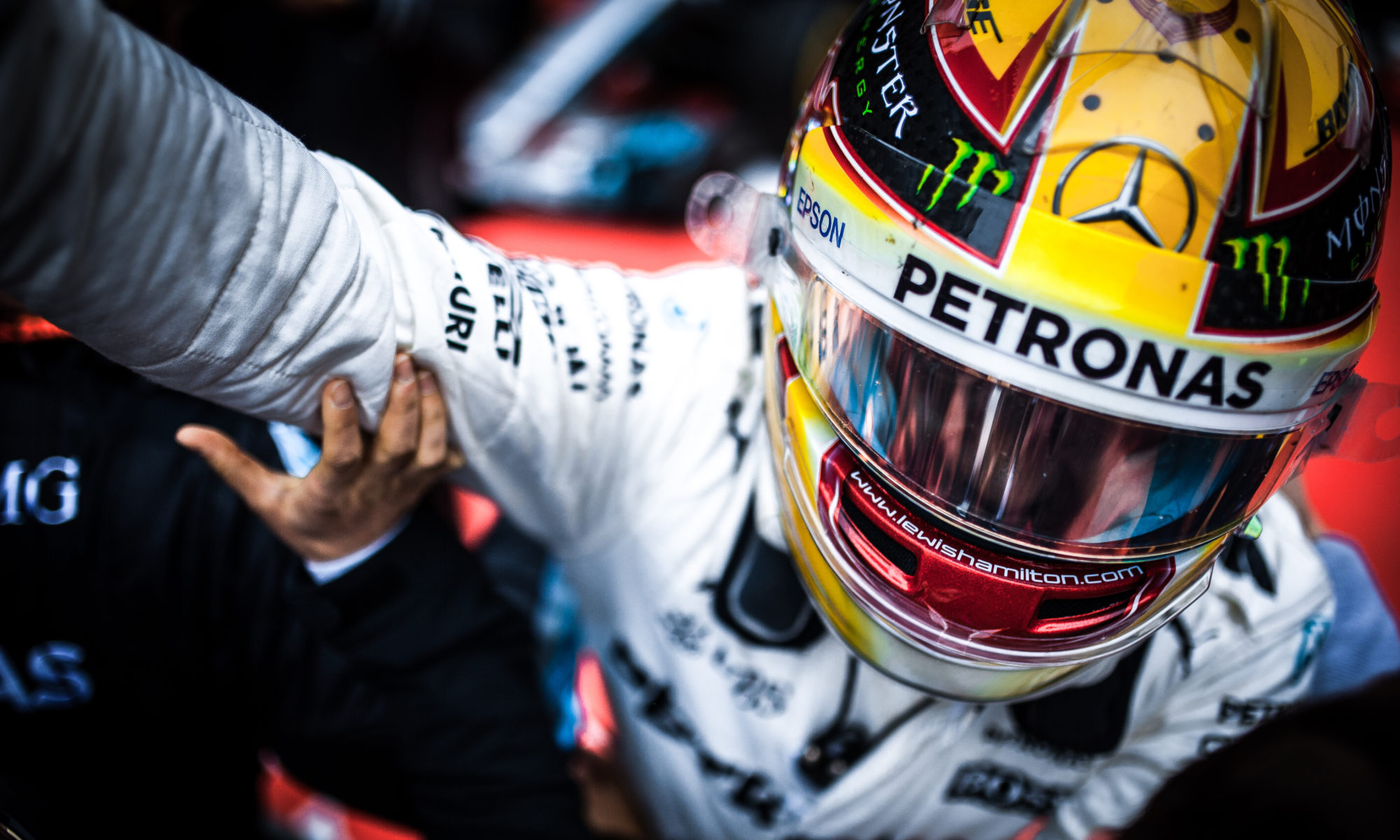
Following Ferrari’s resurgence in 2017 the 2018 season was always going to be a fascinating one. While a number of intense battles have been raging both within and across teams our attention has inevitably been drawn to the battle at the front – the battle for the World Championship between two four-time World Champions.
So far the stoush between Seb Vettel and Lewis Hamilton has really delivered! The chart below shows the cumulative points haul for both drivers as the season has progressed. As you can see it has been a tight battle with a total of six changes in leadership (including the initial leadership of Vettel).
To put some context around this, if there were no further leadership changes after the mid-season break 2018 would still be in the top 16% of seasons of all time in terms of leadership changes – an epic battle indeed!
As you may recall leadership changes was one of the eight factors we looked at in our Best Season in Formula 1 History analysis. Both 2010 and 1986 topped the charts for this factor with a total of ten leadership changes over the course their respective seasons. Could 2018 break the record? We’re looking forward to finding out!
POINTS MARGIN
In the next chart we look at the points margin of the leader over the course of the 2018 season to date. Lewis Hamilton’s current points margin of 24 points is the largest margin held by either competitor so far this year.
Does this suggest Hamilton has it in the bag and is on his way to a 5th Championship? Well, maybe…but read on as we investigate Vettel’s chances of turning the tide.
WHAT CAN HISTORY TELL US?
At the mid-season break last year we developed a model to estimate the likelihood that each driver would go on to win the Championship. We won’t repeat the detailed derivation here but suffice to say we built a model based on historical data allowing us to map the current season standings to each driver’s probability of winning. The chart below shows the fitted curve against the actual WDC wins from different points margins at mid-season over history.
To clarify what all this means, a driver who is leading by 75 points at midseason (+75 on the x-axis) has historically gone on to win the Championship about 90% of the time. Alternatively a driver who is trailing the leader by 25 points (-25 on the x-axis) at mid-season has still gone on to win the Championship nearly 20% of the time.
Mapping our current season standings to the historical model and normalising the results so that they add to 100% gives us the probabilities described in the chart below. We’ve also added the current probabilities implied by Betfair markets to see how punters are reading things compared to our historical model.
As you can see both Betfair and our historical model suggest that it is really only Vettel and Hamilton who are still realistically in the hunt at this stage in the Championship.
WILL LEWIS HAMILTON WIN?
Our model suggests Lewis Hamilton has a 75% chance of taking the title this year versus a Betfair probability of 64%. This is interesting as last year the punters on Betfair gave the Brit (who was trailing Vettel by 14 points) a higher probability of winning the Championship at mid-season than our historical model. As we know Lewis went on to win the Championship last year!
WILL SEBASTIAN VETTEL WIN?
The model gives Seb Vettel a 24% chance of winning the 2018 Championship versus a Betfair probability of 35%. So as was the case in 2017 punters are giving the underdog a higher probability of winning than the statistical model (although Hamilton is still favoured for the victory on Betfair). Whether this reflects a general bias among punters towards backing the underdog is an open question – one we may look at in more detail in the future.
But the plot thickens. Since 1974, after adjusting for changes in the points system seven drivers have managed to pull off a Championship win after trailing by 24 points or more (ie Hamilton’s current lead over Vettel). And only one driver has managed this feat on more than two occasions – one Sebastian Vettel.
And it gets better. Vettel recovered from precisely the same 24 point deficit to take his maiden Championship victory in 2010 (and from 44 points down in 2012 to claim the title!). There is absolutely no question that Sebastian Vettel has what it takes to fight his way back and challenge for the 2018 title. Perhaps the punters have it right in nudging the probabilities higher for the Man in Red?
HAMILTON’S CHAMPIONSHIP TO LOSE
So Lewis Hamilton goes into the second half of the season with the highest points lead of either driver so far this season and with a 75% probability of going on to win the title based on historical win rates. But Sebastian Vettel is by no means beaten yet. Both our model and the opinions of punters give Vettel a fighting chance to bring the Red Team its first World Drivers Championship since Kimi Raikonnen took the title in 2007.
Let the battle continue…

